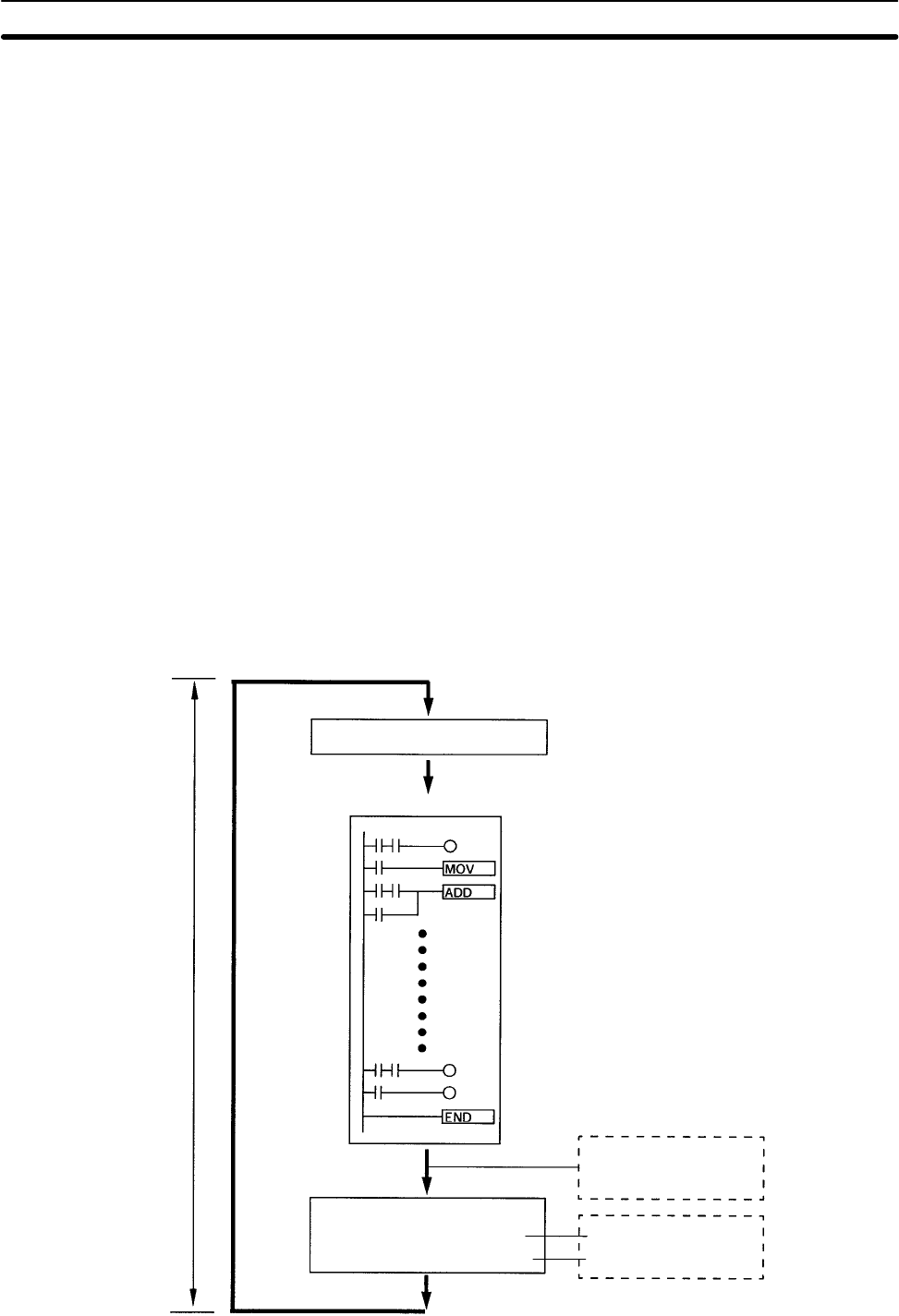
1-3SectionStructure and Operation
17
The cycle time will vary slightly depending on the processing being performed in
each cycle, so the calculated cycle time will not always match the actual cycle
time.
The following diagram shows the cyclic operation of the CPM2B when the pro-
gram is being executed normally.
Normally, the results of program execution are transferred to I/O memory just
after program execution (during I/O refreshing), but IORF(97) can be used to re-
fresh a specified range of I/O words during program execution. The specified
range of I/O words will be refreshed when IORF(97) is executed.
The cycle time is the sum of the time required for program execution, I/O refresh-
ing, and communications port servicing.
A minimum cycle time (1 to 9,999 ms) can be set in the PC Setup (DM 6619).
When a minimum cycle time has been set, CPU operation is paused after pro-
gram execution until the minimum cycle time is reached. CPU operation will not
be paused if the actual cycle time is longer than the minimum cycle time set in
DM 6619.
Note A fatal error will occur and PC operation will stop if a maximum cycle time has
been set in the PC Setup (DM 6618) and the actual cycle time exceeds that set-
ting.
The default settings for RS-232C port servicing and Peripheral port servicing are
5% of the cycle time, but these settings can be changed (between 1% and 99%)
in the PC Setup. The RS-232C port’s setting is in DM 6616 and the Peripheral
port’s setting is in DM 6617.
Cycle
time
Overseeing processes
Main program
I/O refreshing
RS-232C port servicing
Peripheral port servicing
If a minimum cycle time has been
set in DM 6619, CPU operation is
paused until the minimum cycle
time is reached.
The servicing time can be set
in DM 6616.
The servicing time can be set
in DM 6617.
Program Execution in
Cyclic Operation


















